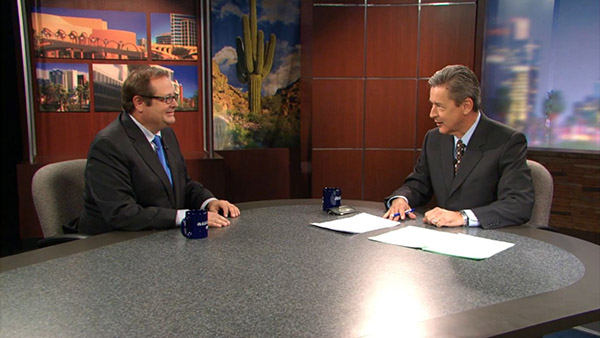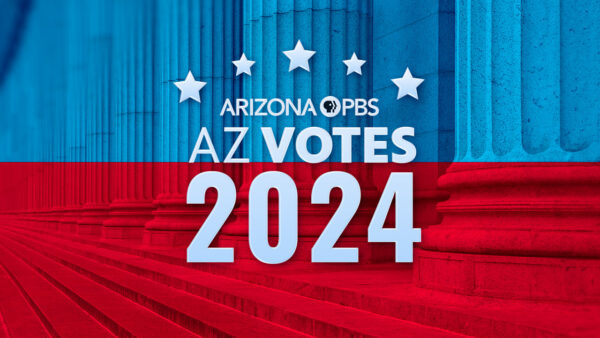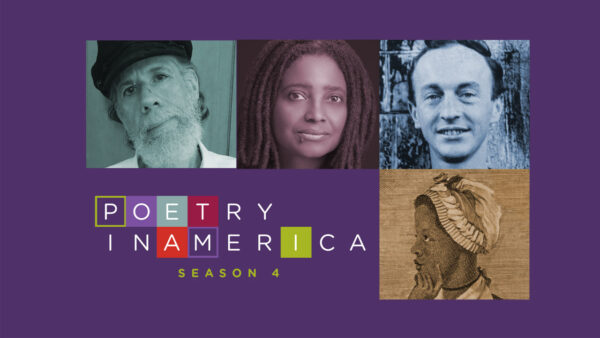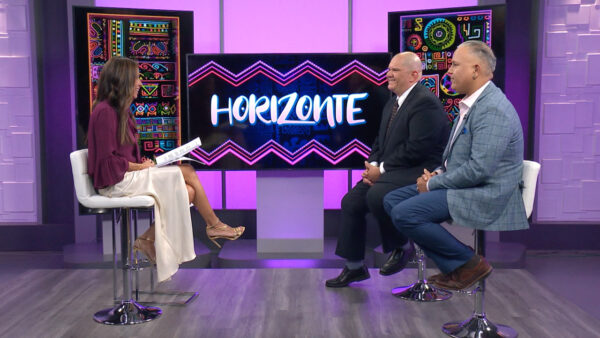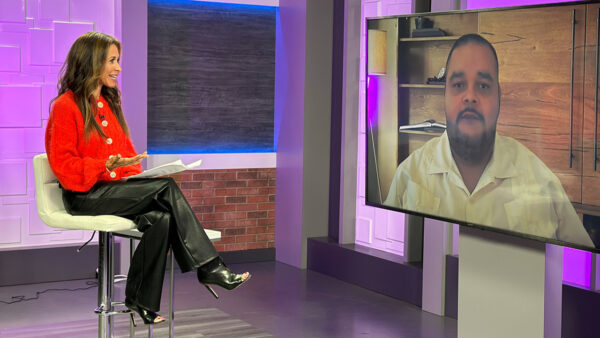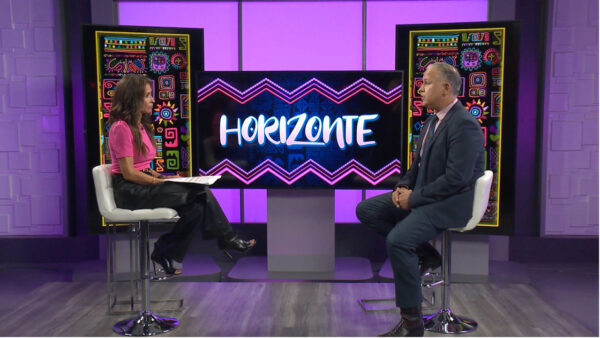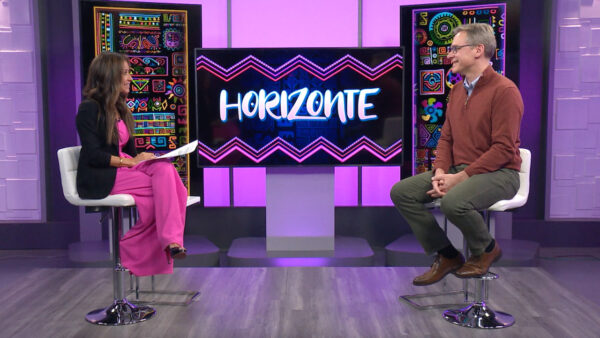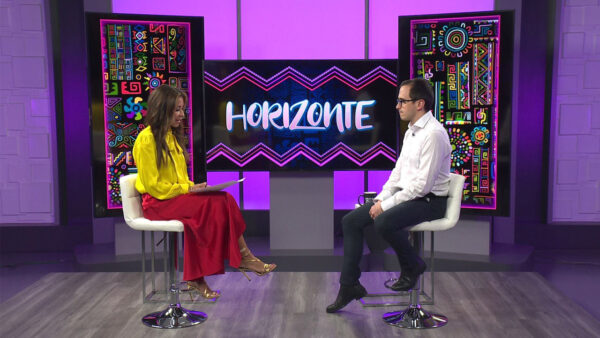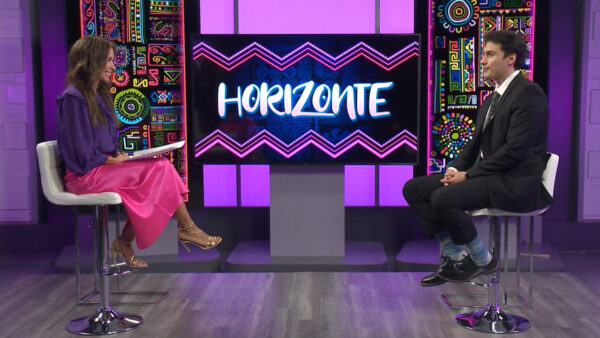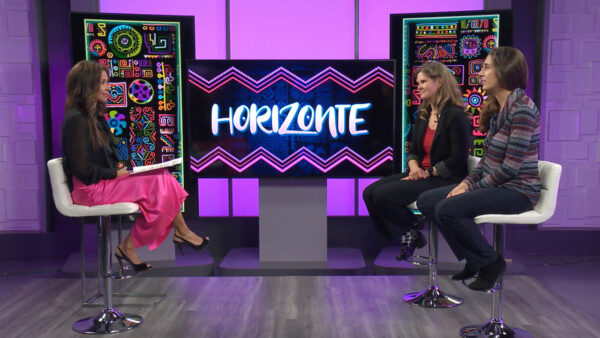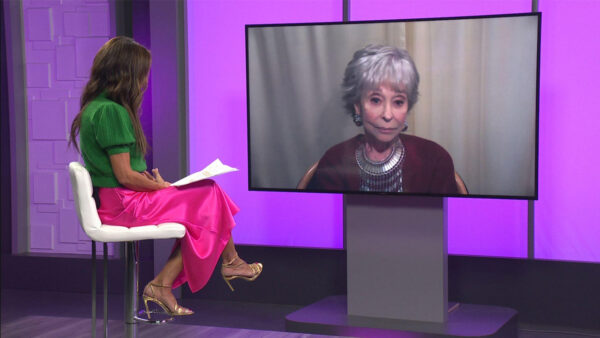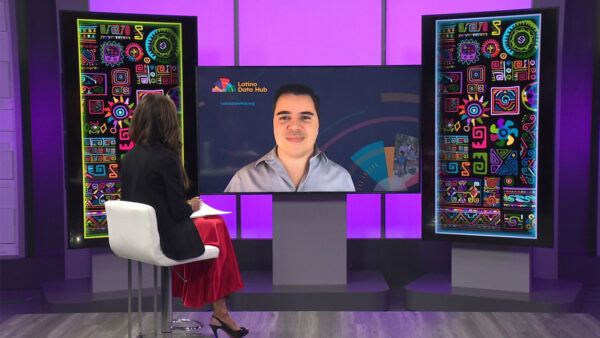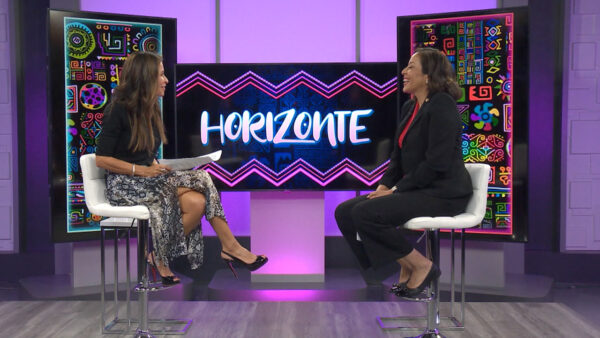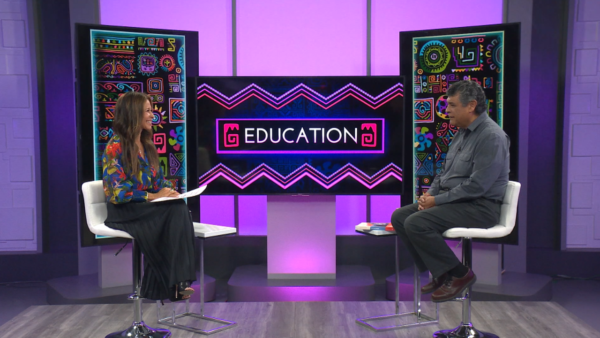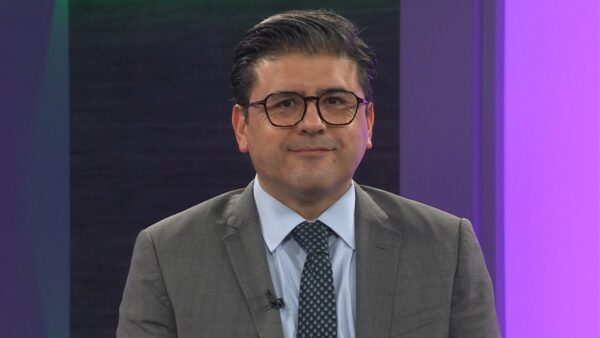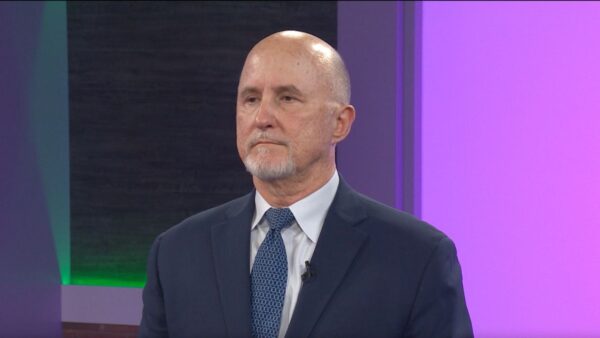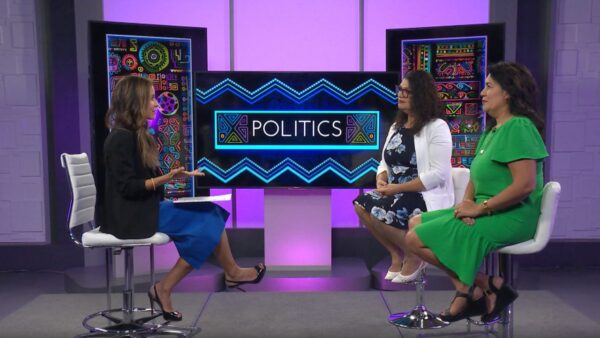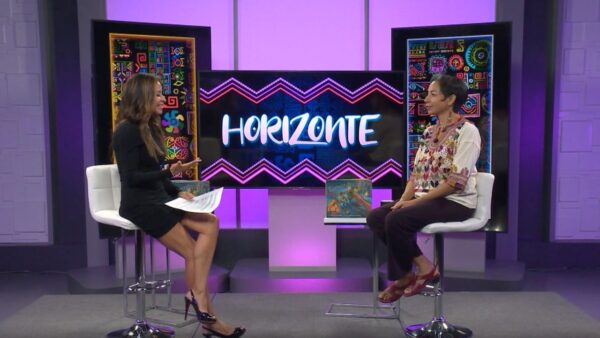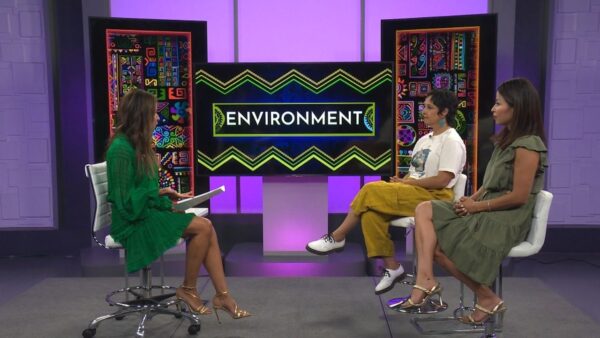Nearly every hospital treats patients with limitied English proficiency, but most interpreters don’t have adequate training. The Medical Interpreter Project was created to train interpreters in the medical field.Phoenix Children’s Hospital Coordinator of Translation Services and Language Education Barbara Rayes discusses the project.
>> José Cárdenas:
Tonight on "Horizonte," a new report ranks Arizona last when it comes to kids staying in school. We'll talk about an initiative addressing drop-out prevention. Also a project designed to help improve communication and a better understanding when it comes to healthcare. And a local Hispanic teen wins the boys and girls club Pacific regional youth of the year title and scholarship. Those stories next on "Horizonte."
>>José Cárdenas:
Good evening. I'm José Cárdenas. Welcome to "Horizonte." Last week a report ranked Arizona 45th in the well being of kids. Data also showed the state has a high percentage of, quote, disconnected youth, end quote, 18 to 24-year-olds who aren't in school and working and have no degree beyond a high school diploma. Also Arizona was highlighted again when it came to drop-out rates. Mike Sauceda gives us some of the details on the drop-out rate in that report.
>> Mike Sauceda:
The annual kids count report was released last week by the NEE Casey foundation in Baltimore. Their findings are based on the 2003 census. Once again their data showed Arizona's high school drop-out rate as the worst in the nation sharing last place with Louisiana. For the fourth year in a row Arizona ranks last when it comes to teens ages 16-19 who have dropped out of school. Arizona's drop-out rate is 12% compared to 8% nationally. Wisconsin, North Dakota and New Jersey are at 4% with the top spot when it comes to the drop-out. The good news is Arizona's rate has improved. In 1998 17% of teens did not graduate, double the national average at the time. Also in Arizona the kids count data shows high school graduates ages 25-29 who have completed a bachelor's degree or higher at 20%. Finally, the comparison shows among all states 15% of the teens who are dropouts are Hispanics, followed by 11% for American Indians.
>> José Cárdenas:
The center for the future of Arizona has made it one of its goals to address the state's high school drop-out rate. Joining us now is former ASU president and now chairman and CEO for the group, Lattie Coor. Dr. Coor thank you for joining us on "Horizonte."
>> Lattie Coor:
My pleasure to be here.
>> José Cárdenas:
The headline in the republic was Arizona drop-out rate the worse in the U.S. Tell us a little about the report, the kids count and let's have a little discussion about the usefulness of those kind of characterizations.
>> Lattie Coor:
Kids count, I think s one of the more valuable reports that we get because it sheds light across the continuum on youth, youth in Arizona, youth as it compares to the rest of the nation. And it is regarded as such one of the best ways to get a view of the overall general health of how a state and its young people are doing. The most significant lesson we've learned at our center for the future of Arizona in dealing with dropout is that dualing data causes all kinds of reactions that are awfully hard to pin down because the data is simply never absolutely accurate no matter whose report it is. Definitions differ --
>> José Cárdenas:
We seem to spend all our time debating whether we are that bad as opposed to discussing the underlying subject.
>> Lattie Coor:
Absolutely. And in my view, the answer is a straightforward one, we have a very large drop-out rate in Arizona, we have under any favorable circumstances one quarter of the students who enter our 9th grade in Arizona schools don't graduate four years later. We're doing better, we're beginning to make some strides, beginning to understand it, but we -- so what that report reinforces is that this is a very significant issue for Arizona and we agreed with that 100%.
>> José Cárdenas:
But whether the numbers are right, is the relative comparison accurate? I mean, do they now have us lower than Mississippi, we're tied with Louisiana for last place.
>> Lattie Coor:
It is so hard to know exactly which of those studies most accurately reflects it. What we've come to in the center is to get at dropout by looking at graduate rate because graduate rate is clearly legally recorded so we know how many of the students who entered in the 9th grade complete four years later.
>> José Cárdenas:
The superintendent says we're average.
>> Lattie Coor:
Well, again, we're dealing with extrapolations. The thing I would most like to have in everyone's mind because it's in ours that a quarter of our students don't graduate and that's a very significant issue for Arizona. Even more so, among our Latino and native American students, a smaller fraction, more than a third, at times more than 40%, aren't graduating.
>> José Cárdenas:
And while I began this interview by pointing out that we seem to spend a lot of our time debating the numbers and how legitimate they are, nevertheless, there does team to be more of a focus on doing something about the problem, whatever it is, people seem to agree it's not good. What's going on in Arizona these days.
>> Lattie Coor:
The most exciting things that's happened in the last decade is the movement in this issue of high school drop-out and high school graduation rate to the center stage in Arizona. The media, public officials, the governor, the national governor's association, has just adopted a major resolution to get the data comparable across the nation. Superintendent of Public Instruction, foundations like the RODELL foundation of Arizona focused on education. We have found in our center for the future of Arizona in collaborating with a variety of groups from teachers to superintendents to parents to the rest this issue is center stage, and giving it that prominence now gives us a much clearer opportunity to do something significant about it.
>> José Cárdenas:
And my sense is also that the business community has made this one of its top priorities. Is that an accurate perception?
>> Lattie Coor: Absolutely. And it's been fascinating to watch. Even as recently as a year ago when you would think that issues like the economic development and others would go to the top of the agenda, the quality of education in Arizona has been number one in group after group, and with it, the dropout and high school graduation rate.
>>José Cárdenas:
Let's talk about some of the specifics here. I understand there are basically four components, beginning with getting good data to answer the question, where do we really rank.
>> Lattie Coor:
It's been so frustrating to have this data issue, and I guess the way I would describe it to all of us from a public point of view, let -- let groups like ours and others really work to see if we can't make this data thing work. So let's -- we'll work away at that so we have truly comparable data. But let's then focus our attention on what we can do to make major improvements in high school completion in the period ahead. And I think we're on that path now.
>> José Cárdenas:
There's also a movement away from just focusing on high school and something instead something you've referred to before as the architecture of success. What do you mean by that?
>> Lattie Coor:
It's so easy to say high school, drop-out. Is it problems with courses? Is it problems at home? All of the research makes it clear that you must start with school readiness. It's the first of four major places along the educational continuum that you've got to focus attention. Kindergarten, school readiness, the ability for a student to enter the 1st grade ready to learn --
>> José Cárdenas:
Let me ask you before we move on, if there's such a consensus in the research on the importance of school readiness, why these huge battles we have had the last two legislative sessions over funding for all-day K.
>> Lattie Coor:
Well, if you've watched that debate unfold, there's been powerful evidence of the value. There have simply been differences of opinion about the way in which the state ought to be investing in it, but the evidence of its significance is clear.
>> José Cárdenas:
3rd and 4th grade.
>> Lattie Coor:
Reading and math. If a student is not at grade level at the end of grade level, their chances of succeeding in high school begin dropping. Now, you can reinforce later, but that's a critical variable. Third, middle school transition, going from a setting that is a much smaller, more stable setting, into the large high school, even though it may take a year or so before the student really begins seriously considering dropping out, that's a major arena. And then the high school years itself where students are demonstrating either lack of interest or are not succeeding appropriately, or any one of a number of problems that need to be identified early and intervention then taken.
>> José Cárdenas:
Is it too late when the students already in high school? Sit too late to do --
>> Lattie Coor:
No, no, it's not. Best of all is to have them on a successful pathway by the time they get to high school. But at the time they're in high school, if there are troubles, the single most important factor is one on one connection with an adult, a teacher, a counselor, a professional, whomever it is, that can really help that student reconnect with the program they have, reconnect with whatever program would work, and get them back on track to succeed.
>>José Cárdenas :
Now, many in Arizona would who would say that our diversity is a tremendous asset would also describe it as challenge when it comes to education. How does that all fit into the mix?
>> Lattie Coor:
Well, diversity is one of the rich features we have here. I think there are two aspects that we see playing a role. One is language proficiency, and it does mean that a student has to be able to function effectively if they're going to learn effectively, and so making sure that's a part of a student's success is important. And the second is the number of youngsters, regardless of race or ethnic background in this state, that come from relatively poor backgrounds. About half of the K-12 student population in Arizona are eligible for free and reduced lunch, which is the federal definition of being low income. So those two factors should not be excuses. They should simply be factors we have to understand and build on in order to build success for our students.
>> José Cárdenas:
Now, I think people would be surprised to hear, and I think you've mentioned this in the past, that if you look at all of our ethnic groups, including white Caucasian, we're below the average in every group, and it's not simply the case that certain school districts with a high minority population bring down the scores in, let's say, Scottsdale.
>> Lattie Coor:
Our way of viewing it is to say it's everybody's problem. If you look at the Caucasian completion rate in Arizona compared with other states, we're below the -- we're below the average. The same is true by each ethnic group. Now, it is particularly so, as I mentioned a moment ago, in native American and Latino populations, but it is everybody's problem. It is something that requires our paying attention to all of the population that we have.
>> José Cárdenas:
And the center is be -- paying particular attention to the Latino drop-out rate. Tell us about that initiative.
>> Lattie Coor:
We were so taken with one of the recommendations of the Morrison stud institute study describing the Latino education dilemma and their language and urging that the state pay some special attention to this very significant large and important part of our population. So we began a study of schools that are Latino intensive, looking for schools that are way out performing what the expectation would be at that school. They're really very successful schools. Comparing them with other schools and developing an understanding of best practices on the grounds that those schools that are succeeding well have some practices we would then like to harvest and make available to a -- schools throughout the state. The study is moving along well and we expect this fall to have something fairly significant to -- that we've learned from it that we can put to work in the field.
>>José Cárdenas:
Dr. Coor, we have about a minute left in the interview. I want to talk about some statewide goals the center is also promoting. Can you tell us about that?
>> Lattie Coor:
We are interested as a center in helping Arizona express its vision for what it wants to be. We combed over 50 reports from the last 15 years, very good reports, gubernatorial commissions and policy institutes, Arizona town hall, and have come one a one-page vision statement that says here's what we ought to be in this rapidly growing period, and we think it's a framework that can help us now really allow communities, regions around the state to develop a much clearer agenda about the things that are most important to them. Education in our view clearly comes out as one of the most important in all of the reviews we've seen.
>> José Cárdenas:
And you've got two targets as I understand, one the centennial and one 2020.
>> Lattie Coor:
That's right. What we're intending to do with all of is that have a graduation goal by the year 2012 that increases the state's centennial, increases graduation rates by 12%. We call it "12 by 12." And the second is to have a goal that starts with the first graders a year from now and would have them graduating by the year 2020, when they reach the 12th grade, at a rate that is in the top 10 -- among the top 10 states in the nation.
>> José Cárdenas:
Dr. Coor, president of the center for the future of Arizona, thank you for joining us on "Horizonte."
>> Lattie Coor:
My pleasure.
>> José Cárdenas:
According to a 2003 article in pediatrics magazine nearly every hospital treats patients with limited English proficiency but less than 25% are staffed with interpreters and most of them don't have adequate training. One of the solutions is the medical interpreter project created to train interpreters in the medical field. With us is Barbara Rayes. Barbara is coordinator of translator services and languages for Phoenix Children's Hospital. She is the master trainer and developed the curriculum for the project. Barbara for joining us on our show tonight.
>> Barbara Rayes:
Thank you for joining me.
>>José Cárdenas:
How did you get involved in this project to begin with.
>> Barbara Rayes:
The project actually began in 2001 as a project funded by St. Luke's health initiatives as a compassionate response to the community to the death of a young lady who was her own interpreter at a time when she was very ill and interpreted for her parents. The young lady's name was GRIZELDA, and she dyed. There was already an interpreter program in place in the Valley that needed updating. We need to do quickly train more interpreters and we already knew that and the response of St. Luke's health initiatives was to help with that.
>> José Cárdenas:
But you yourself has been personally involved since 1991.
>> Barbara Rayes:
Yes, I have been working as an interpreter since 1991 in different settings. I actually was planning to work as a court interpreter and in 1991 I was finishing undergraduate degree in English and Spanish, but I had a very special experience that made me decide that instead of working in courts I would like to work in hospitals, and my very personal experience was that I needed an interpreter. I spoke English. I spoke Spanish. I had a child who died, and at the time of her death, I was the interpreter for her father and that was very difficult because, as I said, I spoke English, I spoke Spanish, but I didn't speak medical, and I didn't know how to say what was wrong with her in Spanish, and besides that, it was very hard to be the interpreter when what I needed to be was the mom. I decided after that happened I would really to be the interpreter for moms who need an interpreter.
>> José Cárdenas:
So how of this horrible personal tragedy you developed a program. Tell us about that.
>> Barbara Rayes:
The Spanish bilingual assistance program started at the County Hospital in 1986, and at the time that I came into the program I came in as a student in 1996 and with -- taking the class I saw that we knew more now about medical interpreting than we did when the program started. And so my role in the program has been to bring the curriculum into the 21st century and now in the class we not only have made it available to the community but we've also made it very relevant to what happens in hospitals today. Society interpreters in the class can expect to learn not only about anatomy and physiology, in English and Spanish, or, in other words, that third language, medicine, but also culture and how --
>> José Cárdenas:
That's an important point. You can have people who are fluent in Spanish or another language, but they don't know the medical terms. Now, tell us how great the need was 20 years ago for medical interpreters and what kind of impact this program, programs like this have had.
>> Barbara Rayes:
20 years ago we did need medical interpreters but we didn't have as many people who spoke Spanish living in Maricopa County or Arizona. Today we have an amazing amount of people who speak Spanish coming to hospitals who may speak limited English or may speak enough English to say, get through the day's routines but when they come to a hospital they need support with, again, the medical language. Today we know that one in five families in Maricopa County speak Spanish as a primary language in their home. Our hospital demographics at Phoenix Children's Hospital mirror that, about 20 to 25% of our families speak Spanish as a primary language.
>> José Cárdenas:
And speaking of Phoenix Children's Hospital, what be there hair involvement in this program?
>> Barbara Rayes:
Phoenix Children's Hospital was a partner in the Maricopa County medical interpreter project. We partnered with the University of Arizona and what we did was we trained 25 trainers around the Valley so that we could increase accessibility to the medical interpreter training program and also so that we could effectively -- we partnered with the University of Arizona so that we could also effectively update the curriculum.
>> José Cárdenas:
That was Anita Francis at the U of A?
>> Barbara Rayes:
Yes, she was the project manager, not only of the Maricopa County medical interpreter project where we trained 25 trainers and over 750 people in medical interpreting in Arizona, but also now is the project manager of the national medical interpreter project for children's hospitals.
>>José Cárdenas:
Before we talk about the national project, let's talk about a book that you've written. Describe it for us.
>> Barbara Rayes:
The Spanish bilingual assistant book is a book for people who want to be an interpreter. Now, lots of us who are bilingual say, oh, okay, I think I can do this and we start interpreting and we find out quickly being bilingual is a good start but being an interpreter requires a bit more. You may know the word for heart but not for atrial septal defect. So quickly without training we get in over our heads. So the book basically addresses not only the basic theory of interpreting in healthcare setting and some of the ethical issues that we face, like, you know, oh, don't tell the doctor, but I've been giving my child this herbal remedy at home, or something like that, not only how to manage those kinds of situations that come up, but also -- but also the very complex kinds of terminology.
>> José Cárdenas:
You touched upon perhaps some cultural aspects here, for example, the use of (Spanish) among the Hispanic population more so -- how does the program prepare people to do that.
>> Barbara Rayes:
The first thing I teach people to do is when someone brings their child to a hospital because they have Empacho. Then the first tool that we use actually is not our mouth, that we -- people think, oh, interpreters they get to talk all day, and actually we sort of guard an inner silence. The first tool that we use is listening, and we teach questions that have been developed by medical anthropologists who are specialists in medicine and culture to help the doctor ask the family to describe what EMPACHO is, because I bet if you ask six people, you get six different answers.
>>José Cárdenas:
All I know is I had it and I was treated and feeling better. Tell us the national program.
>> Barbara Rayes:
The national medical interpreter project is a program that our goal is to train 20 trainers around the country to -- excuse me -- to teach interpreters in children's hospitals.
>>José Cárdenas:
These would be so-called master trainers?
>> Barbara Rayes:
These would be trainers and the master trainer title goes to the person who trains the trainers and then the trainer --
>>José Cárdenas:
Which is you now.
>> Barbara Rayes:
That's me now. Then the trainer title goes to the people who train the interpreters. We know that interpreters need training. We know interpreters are the new tool of the 21st century, in the same way that antibiotics were a tool in the last century that was new with the way that the world moves today, the people of the world are on the move today and the way they have never been before. It's a very exciting time to be alive, languages come together, and interpreters are that tool that doctors can use to listen to patients. We know about 70% of a doctor's diagnosis, don't quote me on the 70% figure, but as I understand it, doctors base most of their diagnosis on listening to patients.
>> José Cárdenas:
Barbara, I won't quote you but I will ask you to tell how people can get involved in these programs if they are interested. We have about three seconds left.
>> Barbara Rayes: If a person is interested in getting involved in the medical interpreter project they can contact Phoenix Children's Hospital, and we will enroll them in the training program. We'll test them and orient them to the training program so they can help in their clinic or hospital.
>>José Cárdenas:
Barbara, thank you for joining us on the show. And good luck on the national program. In May we talked to Chantel Sanchez. She won the boys and girls club youth of the year award. She went on to win the Arizona state and Pacific regional youth of year competition and is now headed to the national competition held in Washington D.C. "Horizon"'s Michael Grant followed up with Chantel last week.
>> Michael Grant:
Joining me now is Arizona state and Pacific regional youth of the year Chantel Sanchez. Chantel, that's cool. Congratulations.
>> Chantel Sanchez:
Thank you.
>> Michael Grant:
You were on the "Horizonte" program in May, that was after you had won state but before you had gone to regional.
>> Chantel Sanchez:
Right.
>> Michael Grant:
Now, you went to Disneyland for the regional.
>> Chantel Sanchez:
Yes.
>> Michael Grant:
So that must have been kind of cool.
>> Chantel Sanchez:
Yeah, it was a real bonding experience for all, all 10 of us. I really got to make lifelong friends and we all exchanged e-mails and phone numbers to keep in touch.
>> Michael Grant:
So there were 10 western state winners --
>> Chantel Sanchez:
Candidates.
>> Michael Grant:
Who attended the regional. Now, what was the process like in the regional?
>> Chantel Sanchez:
It's the same thing. You go through interviews with your judges, and then you get to speak -- give your speech, and then they look at your packets, and the judges decide who they want.
>> Michael Grant:
You did essays.
>> Chantel Sanchez:
Yes. You had to do two essays about postsecondary education, what we thought about it, and then what the club meant to us.
>> Michael Grant:
How tense were you going -- speaking of which, what is your home club?
>> Chantel Sanchez:
The Peoria WISASKI branch.
>> Michael Grant:
How did you feel going into the regional? Were you loose? Were you a little tense?
>> Chantel Sanchez:
I was a little nervous. I was more excited and anxious to meet all these different people that have had the same experiences that I've had and to see what the club actually did nut kids' lives, it was really amazing.
>> Michael Grant:
What brought you to boys and girls clubs?
>> Chantel Sanchez:
My dad used to go Peoria branch and when we moved over here from South Phoenix, my parents thought it was a good idea to send all three of us to the club, and we really got involved and then my parents got jobs there. So then we kind of just took advantage of all the things inside the club, all the programs.
>> Michael Grant:
Now, you're headed for Washington D.C. for the national competition against four other regional winners?
>> Chantel Sanchez:
Right.
>> Michael Grant:
Now, the same sort of format that you'll go through -- and this is in mid-september, right?
>> Chantel Sanchez:
Yes, the 17th through the 22nd.
>> Michael Grant:
But the same kind of format?
>> Chantel Sanchez:
Same thing. You give your three-minute speech, what the club has done for you and then you go through interviews again.
>> Michael Grant:
And you're going to go to the White House.
>> Chantel Sanchez:
Yes, we get to meet the president.
>> Michael Grant:
That's neat. And a little lunch in or around the oval office?
>> Chantel Sanchez:
In the oval office.
>> Michael Grant:
Do you have the forks memorized? Do you know how to work through -- that always throws me.
>> Chantel Sanchez:
You know, "Titanic," it said work on the outside, work your way in, so that's what I do.
>> Michael Grant:
And while you are there, you will celebrate a birthday.
>> Chantel Sanchez:
Yes, I will be turning 18 finally in Washington D.C.
>> Michael Grant:
And you're starting school where, in --
>> Chantel Sanchez:
At ASU west.
>> Michael Grant:
And your interest is medicine.
>> Chantel Sanchez:
Right. I want to be a doctor.
>> Michael Grant:
Outstanding. Chantel Sanchez, this is just truly neat. We certainly wish you the best of luck. It looks like you don't need luck, though. You look very confident to me.
>> Chantel Sanchez:
Thank you.
>> Michael Grant:
No, but have a great time, come back, you'll win.
>> Chantel Sanchez:
I'll win.
>> Michael Grant:
You'll be recognized by the president, I'll talk to you again, and I'll be very honored.
>> Chantel Sanchez:
All right. I'll make that date.
>> José Cárdenas:
For information on "Horizonte" visit our web site www.azpbs.org and click on "Horizonte." That's all for us tonight. Thank you for watching. I'm José Cárdenas. Have a good evening.
Barbara Rayes: Coordinator of translator services and languages, Phoenix Children's Hospital;
